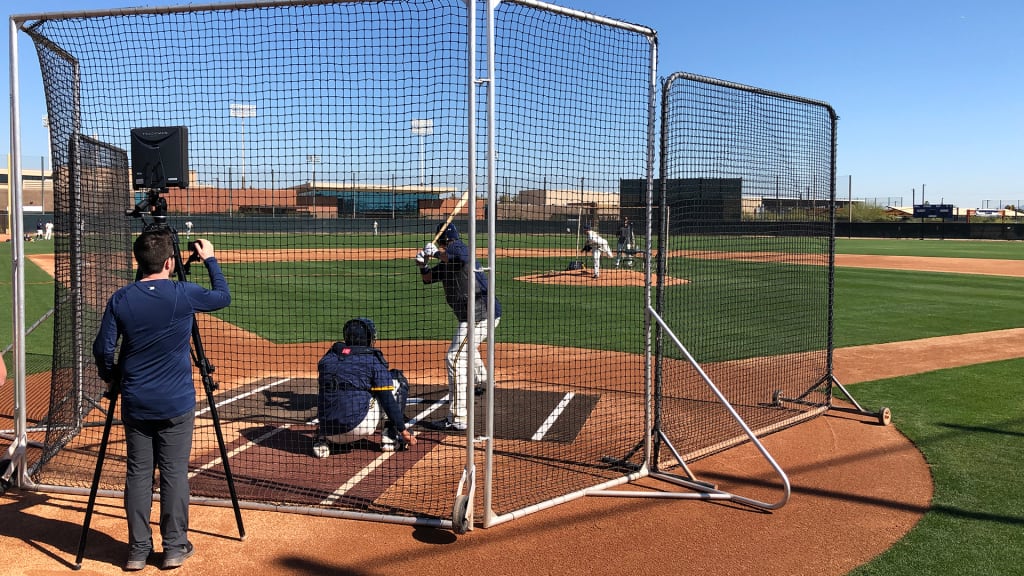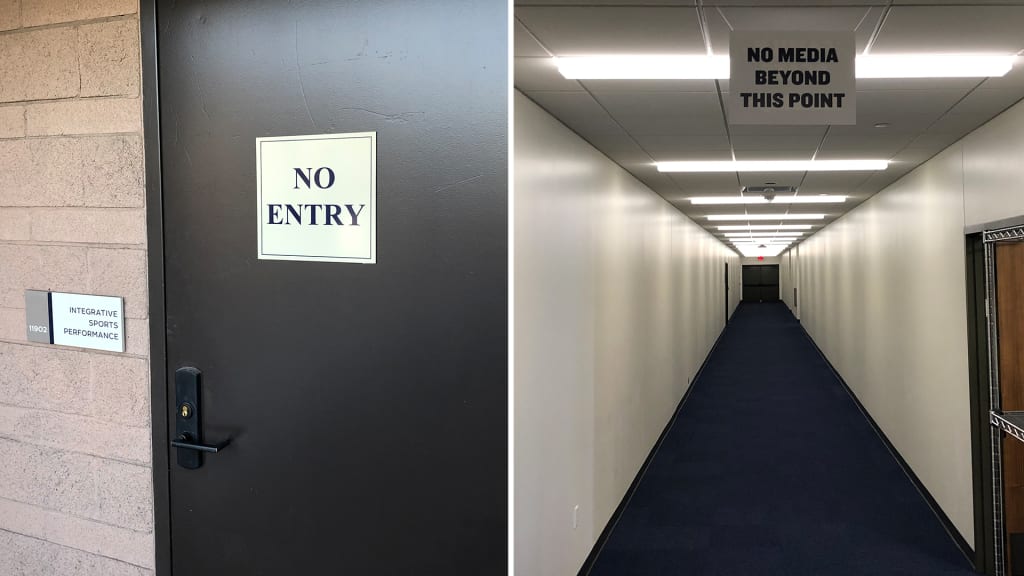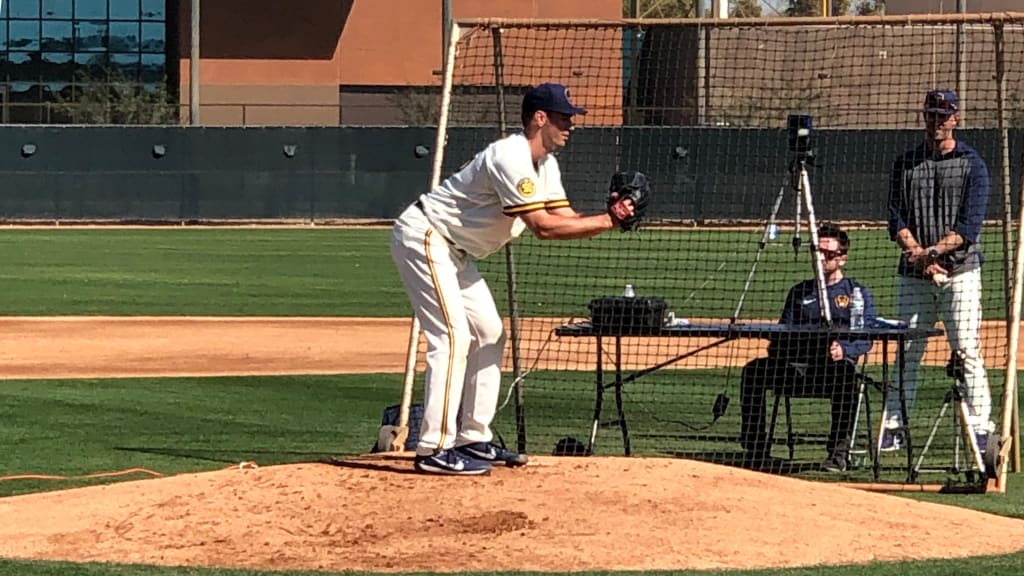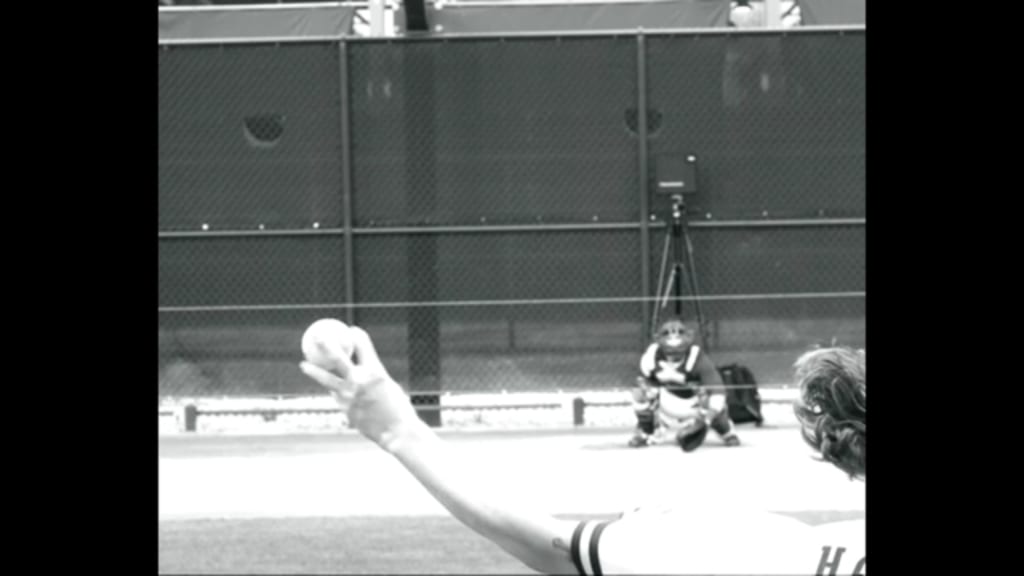PHOENIX -- Josh Hader fishes into his locker for his phone.
¡°I¡¯ll show you a video of it,¡± he says. ¡°It will be easier to explain.¡±
And just like that, one of baseball¡¯s top relievers has demonstrated why the Brewers and other teams have invested millions into technology to revolutionize the way pitchers prepare for the season. Phone in hand, Hader navigates to a Dropbox folder full of dozens of 30-second high-resolution, slow-motion videos from the cameras installed behind every practice mound at American Family Fields of Phoenix. Throughout the organization, from Miller Park to the Minor Leagues, all the way to the team¡¯s complex in the Dominican Republic, if there¡¯s a mound, there are black boxes all around it.
He needs only a few seconds to find the video he has in mind.
---
Hader is working on his changeup. If it¡¯s Spring Training and your name isn¡¯t Trevor Hoffman, odds are good that you¡¯re working on a changeup. Hader says he had a ¡°decent¡± one back when he was a starting pitcher in the Orioles¡¯ and Astros¡¯ Minor League systems, but then he joined the Brewers¡¯ bullpen midway through 2017 and started firing fastballs past hitters at a record rate. The changeup faded from his arsenal.
Now he¡¯s the two-time reigning National League Reliever of the Year, trying to make it three years in a row. That means taking another shot at harnessing the pitch.
¡°Edgertronic is probably my favorite thing. Everyone is different,¡± Hader said. ¡°For me, I¡¯m a visual guy. I need to see how my hand is turning over, how my fingers are placed on the ball. Edgertronic has been really good.

¡°With them digging more into the lab, they¡¯re starting to learn how pitches should spin to get optimal drop or movement. That¡¯s one of the things we¡¯ve been looking into with TrackMan, seeing how your ball rotates.¡±
Timeout.
Some glossary entries are in order:
Edgertronic is a high-speed camera that takes video at better than 1,000 frames per second, and they are everywhere in baseball these days. Trevor Bauer was one of the first pitchers to popularize the device in 2015, and the Astros are considered the pioneers of using it in abundance to help pitchers see the baseball coming out of their hands. How did Justin Verlander elevate his good slider to an elite slider at age 34? Edgertronic played a part.
TrackMan and competitor Rapsodo use radar or a combination of radar and optical technology to track pitch metrics. (Actually, they go beyond pitching; TrackMan is now installed in all 30 Major League stadiums to supply the data of movements all over the field used by Statcast.) Gone are the radar guns behind home plate, which for decades supplied scouts with velocity readings. Now, when a pitcher throws a session in Spring Training, the coach behind him is flanked by an analyst with an iPad showing velocity, spin rate, spin axis and a slew of other readings.
¡°The Lab¡± is the Brewers' sports science wing -- Integrative Sports Performance -- housed in what used to be the Major League clubhouse at what used to be called Maryvale Baseball Park. The team spent $60 million to renovate the facility in time for 2019 Spring Training, including a more than seven-figure investment in ¡°the lab,¡± which is off-limits to reporters, and about which president of baseball operations David Stearns speaks only in broad terms lest any of Milwaukee's proprietary techniques slip out. In the lab, there is a mound surrounded by technology that allows a pitcher to work a specific pitch to achieve the optimal shape.

Using video and other technology to engineer pitches isn¡¯t new. Second-year Brewers pitching coach Chris Hook figures that 75 percent of the arms in a given Spring Training camp are working on something new. What¡¯s changed -- swiftly and dramatically -- is the process. The Crew and other teams not only have a better understanding of the data, but they can also give a pitcher real-time feedback on the mound.
A pitcher who throws a pitch in the lab can turn around and ask, ¡°How was that?¡±
In a matter of seconds, he¡¯s looking at TrackMan graphs or Edgertronic video, right there on the spot.
¡°A second after you throw the pitch, you¡¯re getting a slow-mo video of what your hand is doing at release,¡± said 2019 first-round Draft pick Ethan Small, who spent the offseason adding a slider. ¡°If you can¡¯t get better with that, I don¡¯t know what you can do.¡±
¡°Pitching is such a feel thing, but I¡¯m a visual learner myself,¡± said Trey Supak, who was named MLB Pipeline's 2019 Brewers Pitching Prospect of the Year. ¡°It happens so quick on the mound. It¡¯s like, say you¡¯re getting around a slider instead of staying behind it. It helps me to see it rather than just feel it.¡±
Said Small: ¡°Instead of just getting opinions, now you¡¯ve got factual data. Instantly.¡±
¡°It¡¯s incredible how fast,¡± Supak said. ¡°It¡¯s like, ¡®I wish we had this before.¡¯¡±
Small and Supak like lots of data. Part of Hook¡¯s job is to determine how deeply into the data each of the pitchers wants to dive.
¡°Do they want it now, or do they want it later?¡± Hook said. ¡°But now we know what we want, and we can help them match up that feeling when it¡¯s right.¡±

Take 2019 All-Star Brandon Woodruff. He said he found himself ¡°pitching to some of the numbers¡± in the first month of last season, and it distracted him from competing on the mound. So he communicated that to the coaches, who amended the way information was relayed to Woodruff during bullpen sessions.
Woodruff took off. He made the NL All-Star team and was in the NL Cy Young Award conversation before an oblique injury shut him down for two months following the All-Star break. He¡¯s been looking at the data this spring, and rather than introducing a new pitch, Woodruff is tweaking two mainstays. He is focused on the spin efficiency of his curveball and the spin rate of his slider.
Yes, there is a difference.
¡°Two years ago,¡± Woodruff said, ¡°I never even would have thought about that.¡±
The Brewers¡¯ poster boys for the slider this spring are Corbin Burnes and Freddy Peralta, two promising young arms who were entrusted with spots in the starting rotation at the start of last season, only to find themselves in the bullpen by the second week of May. Peralta didn¡¯t last past the fourth inning in four of his first five starts. Burnes allowed 11 home runs in four starts in April.
Peralta later had some success in relief, but Burnes never found a foothold, despite off-the-charts data on his fastball and slider. So the Brewers sent him to the pitching lab in search of answers. Besides a day or two around Thanksgiving and Christmas, Burnes¡¯ ¡°offseason¡± consisted of one week off in October. He and his fianc¨¦e went on a cruise.
¡°I didn't want to wipe the slate completely clean, because as far as the metrics, our slider was one of the better pitches in baseball,¡± Burnes said. ¡°For me, it was, ¡®How can we start with the slider and make everything around it better, which in turn makes the slider better?¡¯¡±
Burnes' Cactus League debut was encouraging, to put it mildly. He struck out Matt Olson of the A¡¯s to finish a long scoreless inning. It was a slider at 94 mph.
Here¡¯s another example: Eric Lauer.
The Brewers acquired Lauer, a left-hander, with infielder Luis Ur¨ªas from the Padres the day before Thanksgiving. Like Burnes and Peralta, Lauer is a young pitcher (he¡¯s 24 and has already spent the bulk of two years in the big leagues) who has had some success. Lauer was San Diego¡¯s Opening Day starter last season.
When he reported to American Family Fields of Phoenix, the Brewers put Lauer through a mound session in the lab. The first time he threw his changeup, he remarked that it has always been his worst pitch. Right there, someone suggested a different grip.
The difference in drop, Lauer said, was immediately striking. He thought to himself, "OK, that¡¯s actually what a changeup should do."
¡°To immediately see the difference in break on a plot, on a grid, is very helpful,¡± he said. ¡°Even if it¡¯s a weird-feeling grip and it breaks how you want it to, you can say, ¡®OK, that may be the right grip, even if it¡¯s a little uncomfortable.¡¯ It gives you that little factual backing you need.¡±
Lauer was a first-round Draft pick less than four years ago, and already he¡¯s seen a revolution in pro baseball.
¡°I was very old-school in the way I pitched. I liked to feel things,¡± he said. ¡°I didn¡¯t really buy into the technology side until I got over here [to the Brewers]. The pitching lab they have is incredible. The way that they explain it to you is so good. They do such a good job of showing you how it can help that it¡¯s hard not to buy in.¡±
Said Hook: ¡°For us pitching coaches who have been around, we get to validate our eyes. We had been guessing at it, but now we know for sure. It¡¯s exciting.¡±
It¡¯s moving fast, especially in the world of pitching. For hitters, while wearable technology has promise, and Edgertronic, TrackMan, Rapsodo and similar devices have helped fuel the launch angle revolution, it is more challenging to simulate game action. Hiring pitchers to throw to hitters carries risks and high costs. One Brewers official suggested that virtual reality offers promise, but it¡¯s not there yet.
So for the moment, the sense in Brewers camp is that pitchers are benefiting most.
¡°Pitchers are exposed to this technology year-round now,¡± Stearns said. ¡°A lot of these guys, when they go home, they¡¯re working out at facilities that have Rapsodos or have TrackMan. So it¡¯s just a natural extension that if they¡¯re going to use this technology at home, they often want it when they are preparing for a season or going through their bullpen [sessions].
¡°Real-time feedback is helpful. There¡¯s also a balance. These guys have to get into their competitive mode so they are ready to take the field for a Major League season, when you can¡¯t turn around and get immediate feedback from a coach. There is a balance here. I think our guys are doing a good job of walking that line.¡±
Might Stearns take his questioner on a tour of the lab?
¡°That¡¯s not going to happen,¡± he says with a smile. ¡°We¡¯ll keep what¡¯s hidden, hidden.¡±
---
Hader locates the video he was looking for.
¡°See right there?¡± he says. ¡°You see your hand position, and how the ball rotates off your fingertips. You can see which finger touches the ball last. If it¡¯s cutting, you can say, ¡®OK, maybe I need to move the ball in my hand a little bit to get a different effect.¡¯ So that¡¯s what we¡¯ve been working on.

¡°The technology is incredible. Everybody is different in how they [make changes], but me, I need visual. I just can¡¯t translate the numbers into what I¡¯m working on. Some guys can. But we¡¯re all trying to get better, trying to get that next tip and get to the next level. Something like this can take you from a two-pitch pitcher to a three-pitcher.¡±
Will Hader be a three-pitch pitcher this season?
He grins and walks away.
Can¡¯t give away any more secrets.



